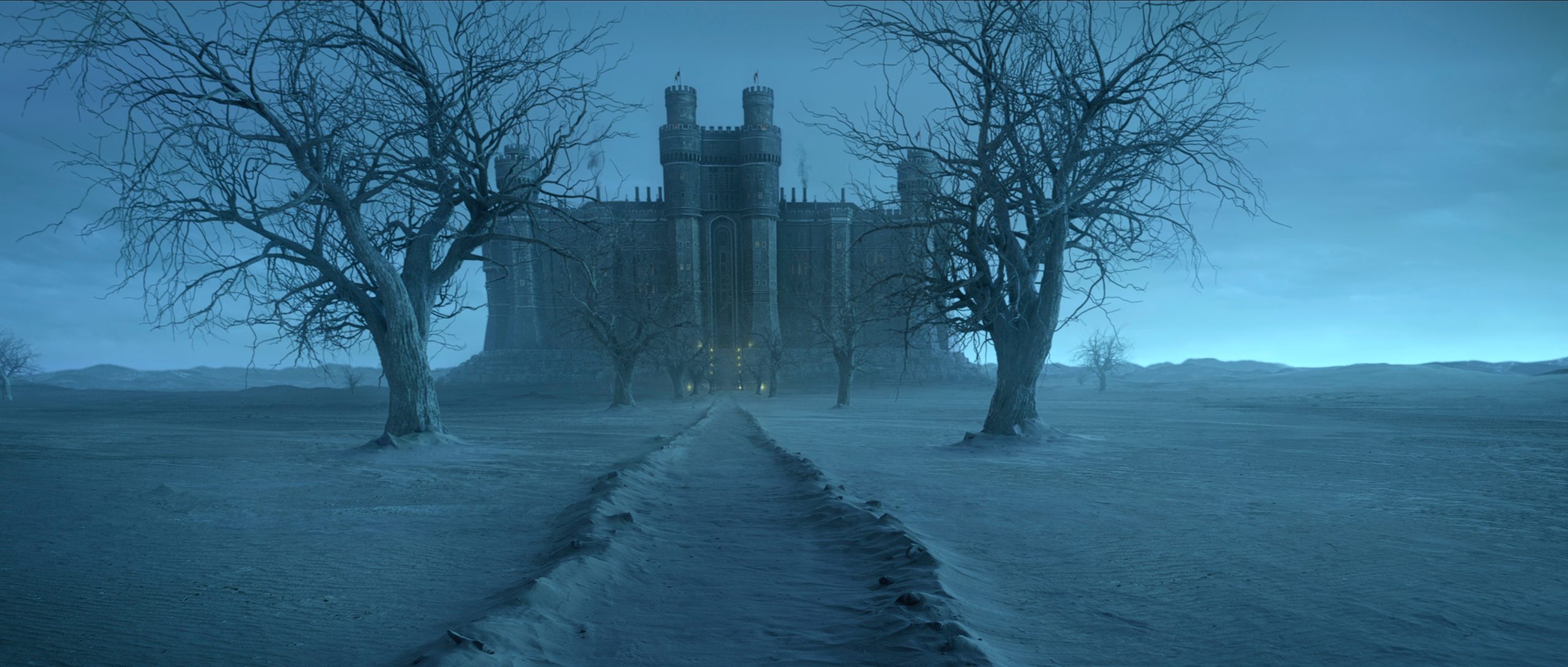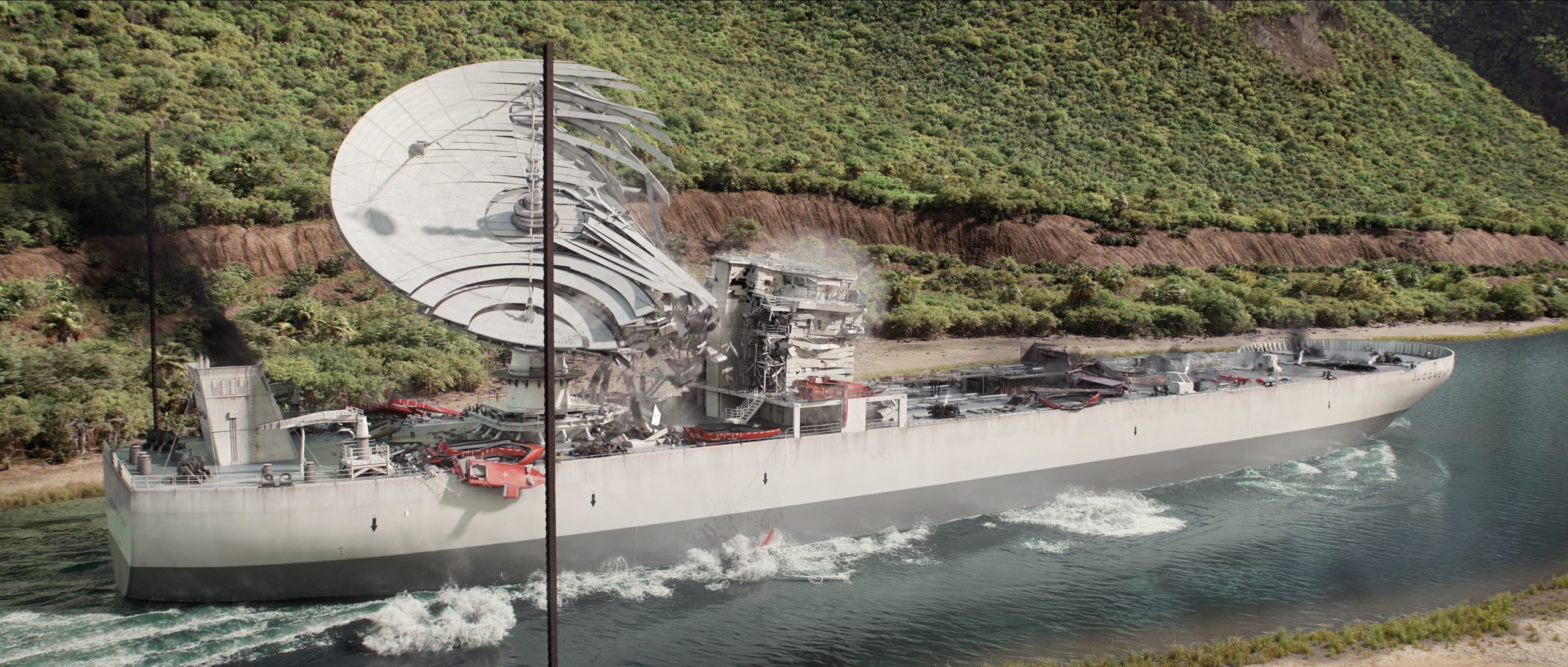Visual Effects Producer Steve Kullback and Visual Effects Supervisor Stefen Fangmeier are no strangers to the working environment shepherded by Game of Thrones showrunners David Benioff and D.B. Weiss. Their collaboration continues into Netflix’s 3 Body Problem, a wildly different series that combines advanced physics concepts, beyond state-of-the-art virtual reality, and techno warfare with an alien invasion.
Definitely not small potatoes, VFX-wise.
Across the series, there are approximately 2,000 visual effects shots. For comparison, the final season of Game of Thrones, replete with a white walker battle and flying dragons (both fire and ice varieties) and massive destruction everywhere, boasted around 3,200 visual effects shots. 3 Body Problem leverages visual effects in service of the story and to help create an environment into which its actors breathe real human emotions. Visual effects illustrate both concepts that can’t easily be recreated (because they don’t currently exist) and accentuate environments to make scenes feel as realistic as possible.
In fact, the series opens on a scene set at Tsinghua University. The requirements of the intense sequence would have been near impossible to capture through traditional filmmaking techniques. The VFX teams orient the viewers in that brutal moment in time, and it was one of Kullback’s favorite uses of VFX within the series.
“My personal favorite is the struggle session that opens the first episode at Tsinghua University. On the one hand, it’s the sort of scene that we never could have shot. It feels so real to me and so authentic. I feel like the crowd work is just so seamlessly executed by El Ranchito VFX,” Kullback enthused. “For the environment, we drew on a world of archival photography to be able to be as realistic to the actual events as humanly possible. Not bad for a couple of hundred extras in a in a parking lot in London.”
But there are, of course, bigger moments of VFX work at hand throughout the series. In the pilot episode, the audience discovers that characters within the series have access to elaborate virtual reality headsets that orient the wearer in a VR world the likes humanity has never seen. One of the initial discussions Kullback, Fangmeier, and team had about the VR world was how perfect to make it. Should there be some sort of lag? Should it look like a game?

The answer came with the direction to create the environment as realistic as possible.
“I at first thought that this could be really fantastical. This could be really heightened reality, but the whole point was it was much more. It was just realistic, not really looking like a game at all. There wasn’t meant to be any sort of game aspect,” Fangmeier recalled, describing work that went into reflecting the ground texture, insects that land on the actors’ hands, and the extreme weather conditions reflected within the VR world.
But that would prove simple compared to the events of episode five, “Judgment Day.”
“I read episode five, and I screamed and ran for shelter,” Kullback laughed.
In “Judgment Day,” an team assembled to stop the impending alien (the San-Ti) invasion makes a strike against the San-Ti’s earthbound supporters who shelter like a cult on a converted oil tanker. The assault comes as the oil tanker, scheduled to travel through the Panama Canal, is literally sliced apart by extremely advanced nano-fiber technology developed by one of our heroes. The sequence is harrowing and unforgettable, made more so by the brilliant VFX.
After running for shelter, Kullback worked with the VFX team to break the scene down starting with concept art about how the dissolution of the ship would appear. As the ship proceeds through the invisible net of nano fibers, it slices everything apart including the ship, equipment stored on top, clocks on the wall, hoses on the deck, and, yes, the thousand people — including men, women, and children — in half. Even the Panama Canal itself had to be rendered through VFX.

It was an intense experience that required careful collaboration and consideration by the VFX teams, right down to how much carnage to display.
“We don’t show the gore when these layers come apart. You could imagine there were all these rooms that had been built with quarters for these people. You imagine there was clothing, furniture, and of course bodies, so I said we have to see some colors in there when these layers come apart. It’s kind of like seeing the insides of a beehive,” Fangmeier shared. “Yet, we never went close up enough to see the actual gore of people’s sliced bodies being then ground to shreds by these metal plates as the ship breaks apart. You can just sort of imagine it, but I was happy that we didn’t have to go close up.”
Other complicated shots across the series included visually rendering the construction of an incredibly advanced supercomputer constructed by the San-Ti, exploding atomic bombs in outer space, freezing a chimpanzee (relax, the chimp lived), and illustrating the manipulation of our sky by the San-Ti. According to Fangmeier, the multi-layered series offered up several unique challenges that he and his team had to break down and think through carefully.
But that is only season one. 3 Body Problem is based on the series of Chinese sci-fi novels Remembrance of Earth’s Past by Liu Cixin. There are two more seasons currently planned, and given what we’ve been exposed to so far, the challenges can only become more involved.
“Having just gotten a chance to look at the outline for the second season,” Kullback teased, “I can attest that, without being able to talk too much about it that from here, it goes completely insane.”
Can’t wait.
3 Body Problem season one streams exclusively on Netflix.





![2025 Oscars: Can a Late-Breaker Still Win Best Picture? [POLL]](https://www.awardsdaily.com/wp-content/uploads/2024/10/gladiator-350x250.jpg)
